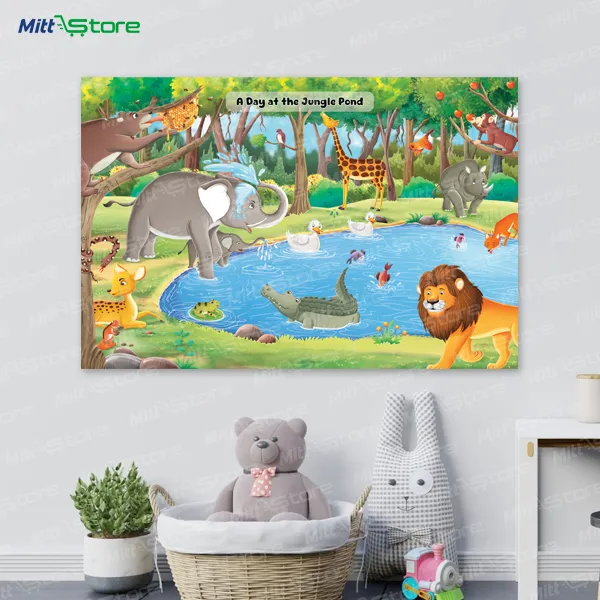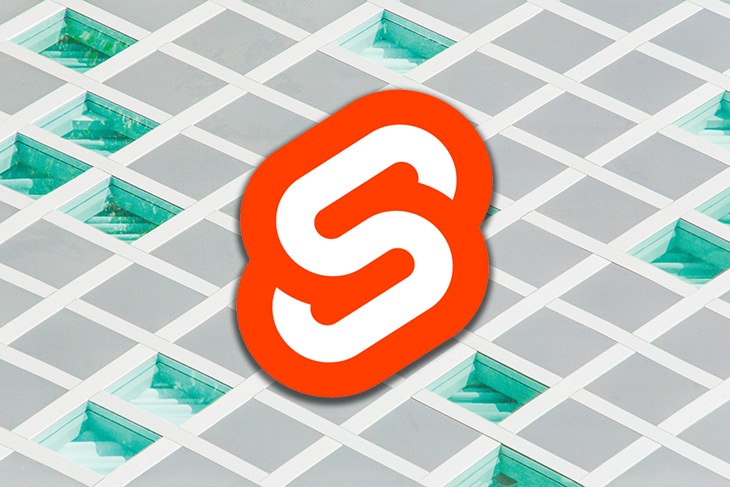The JavaScript ecosystem is in a perpetual state of innovation, with frameworks constantly evolving to provide developers with more powerful, elegant, and efficient tools. In the latest wave of exciting Svelte News, a groundbreaking feature has been introduced that promises to redefine how we handle direct DOM manipulation and complex interactivity: Svelte Attachments. This new paradigm builds upon the foundation laid by Svelte Actions, offering a more structured, stateful, and reactive approach to enhancing DOM elements. For developers who have long sought a cleaner way to integrate third-party libraries or manage intricate, self-contained UI logic, Attachments are a game-changer.
While the frontend landscape is filled with powerful tools, from the component-driven world of React News to the directive-rich environment of Vue.js News, Svelte has always carved its niche through surgical precision and compile-time magic. Attachments extend this philosophy, providing a Svelte-native solution to problems that often required awkward workarounds or leaving the framework’s reactive ecosystem. This article will provide a comprehensive deep dive into Svelte Attachments, exploring their core concepts, practical implementations, advanced techniques, and best practices, equipping you to leverage this powerful new feature in your next project.
What Are Svelte Attachments?: The Core Concepts
To fully appreciate the innovation of Svelte Attachments, it’s essential to first understand the role and limitations of their predecessor, Svelte Actions. This context helps illuminate why Attachments represent such a significant leap forward in framework design, impacting everything from simple UI enhancements to complex integrations with tools from the Three.js News and D3.js News ecosystems.
From Actions to Attachments: An Evolution
Svelte Actions are a beloved feature, offering a simple yet effective way to hook into an element’s lifecycle. An action is a function that Svelte calls when an element is mounted to the DOM. This function can return an object with an update method, called when parameters change, and a destroy method, called when the element is unmounted. They are perfect for simple tasks like lazy-loading images, adding a “click outside” event listener, or initializing a simple third-party widget.
However, as application complexity grows, the limitations of actions become apparent. They are stateless by design, making it cumbersome to manage internal state within the action itself. Communication from the action back to the Svelte component is not straightforward, often requiring the manual dispatch of custom events. For complex logic, the single function scope can become cluttered and difficult to maintain. This is the gap that Svelte Attachments are designed to fill.
The Attachment API: A New, Structured Paradigm
Svelte Attachments introduce a more robust, object-oriented approach. Instead of a simple function, an Attachment is typically a class instance that encapsulates state, logic, and lifecycle methods. This structure provides a clean, reusable, and highly organized way to manage a DOM element’s behavior.
The new syntax is declarative and intuitive, using the familiar use: directive:
<script>
import MyAttachment from './MyAttachment.js';
const myAttachment = new MyAttachment({ someOption: true });
</script>
<div use:myAttachment>This element is now enhanced.</div>An Attachment class has a defined structure, similar to a component’s lifecycle but bound directly to a DOM node. Here is a basic “click outside” attachment, reimagined from a classic action, to illustrate the new structure.
// src/attachments/ClickOutside.js
export class ClickOutside {
node;
handler;
constructor(node, { onOutsideClick }) {
this.node = node;
this.handler = onOutsideClick;
window.addEventListener('click', this.handleClick, true);
}
handleClick = (event) => {
if (this.node && !this.node.contains(event.target) && !event.defaultPrevented) {
// Call the handler passed from the component
this.handler();
}
};
update({ onOutsideClick }) {
// Reactively update the handler if it changes
this.handler = onOutsideClick;
}
destroy() {
// Crucial cleanup to prevent memory leaks
window.removeEventListener('click', this.handleClick, true);
}
}In the Svelte component, you would use it like this:
<script>
import { ClickOutside } from './attachments/ClickOutside.js';
function handleOutsideClick() {
console.log('Clicked outside the box!');
}
const clickOutsideAttachment = new ClickOutside({ onOutsideClick: handleOutsideClick });
</script>
<div use:clickOutsideAttachment>
<p>Click anywhere outside of this box.</p>
</div>This class-based approach immediately offers better organization, state management (e.g., storing the node and handler), and clarity, setting the stage for more advanced capabilities.

Getting Hands-On: Implementing Your First Attachment
Theory is one thing, but the true power of Svelte Attachments becomes clear when you start building with them. Let’s walk through a more practical, real-world example: creating a reactive and customizable tooltip. This exercise demonstrates how Attachments can encapsulate complex DOM manipulation, styling, and event handling, keeping your Svelte components clean and focused on application logic. This approach is especially powerful in modern development environments powered by tools discussed in Vite News and TypeScript News, where type safety and modularity are paramount.
Example: A Feature-Rich Tooltip Attachment
Our goal is to create a Tooltip attachment that can be applied to any DOM element. It should accept reactive content and a position (e.g., ‘top’, ‘bottom’) as parameters. The attachment will be responsible for creating the tooltip element, positioning it correctly relative to the host node, and showing/hiding it on mouse hover.
First, let’s define the Tooltip Attachment class:
// src/attachments/Tooltip.js
export class Tooltip {
node;
params;
tooltipElement;
constructor(node, params) {
this.node = node;
this.params = params;
this.node.addEventListener('mouseover', this.show);
this.node.addEventListener('mouseleave', this.hide);
this.node.addEventListener('mousemove', this.updatePosition);
}
show = () => {
// Create the tooltip element if it doesn't exist
if (!this.tooltipElement) {
this.tooltipElement = document.createElement('div');
this.tooltipElement.className = 'svelte-tooltip';
document.body.appendChild(this.tooltipElement);
}
// Set content and make it visible
this.tooltipElement.textContent = this.params.content;
this.tooltipElement.style.display = 'block';
};
hide = () => {
if (this.tooltipElement) {
this.tooltipElement.style.display = 'none';
}
};
updatePosition = (event) => {
if (this.tooltipElement) {
// Simple positioning logic, can be expanded
this.tooltipElement.style.left = `${event.pageX + 10}px`;
this.tooltipElement.style.top = `${event.pageY + 10}px`;
}
};
update(newParams) {
// Reactively update the content
this.params = newParams;
if (this.tooltipElement) {
this.tooltipElement.textContent = this.params.content;
}
}
destroy() {
// Clean up event listeners and the DOM element
this.node.removeEventListener('mouseover', this.show);
this.node.removeEventListener('mouseleave', this.hide);
this.node.removeEventListener('mousemove', this.updatePosition);
if (this.tooltipElement) {
this.tooltipElement.remove();
}
}
}Now, let’s use this attachment in a Svelte component. Notice how the component’s responsibility is simply to manage the state (the tooltip text), while the attachment handles all the complex DOM logic.
<script>
import { Tooltip } from './attachments/Tooltip.js';
import { writable } from 'svelte/store';
let tooltipContent = 'This is a static tooltip.';
let dynamicContent = writable('Hover to see my value!');
// Svelte's reactivity makes updating the attachment seamless
$: tooltip = new Tooltip({ content: $dynamicContent });
function updateContent() {
dynamicContent.set(`Updated at ${new Date().toLocaleTimeString()}`);
}
</script>
<style>
/* Add this to your global stylesheet or a :global() block */
.svelte-tooltip {
position: absolute;
background-color: #333;
color: white;
padding: 5px 10px;
border-radius: 4px;
font-size: 14px;
z-index: 1000;
pointer-events: none; /* Important so it doesn't interfere with mouse events */
}
</style>
<h2>Svelte Attachments Demo</h2>
<p>
Hover over this
<strong use:tooltip={{ content: tooltipContent }}>
static text
</strong>
to see a simple tooltip.
</p>
<p>
This button's tooltip is reactive.
<button use:tooltip on:click={updateContent}>
Update Dynamic Tooltip
</button>
</p>This example highlights the clean separation of concerns. The component is declarative, while the attachment is imperative. This pattern is incredibly powerful and is a welcome addition for developers working in complex ecosystems that often include tools from Node.js News for the backend and frameworks like Next.js News or Nuxt.js News for full-stack applications.
Mastering Attachments: Advanced Patterns and Integrations
Svelte Attachments truly shine when tackling complex scenarios that were previously awkward with actions. Their encapsulated, stateful nature makes them the ideal tool for integrating with third-party JavaScript libraries and for establishing sophisticated, two-way communication between an element and its host component.
Integrating Third-Party Libraries: A Chart.js Example
One of the most compelling use cases for Attachments is wrapping non-Svelte libraries. Let’s say we want to integrate Chart.js to render a chart on a <canvas> element. The attachment can manage the entire lifecycle of the chart instance.
The ChartAttachment would initialize the chart, feed it reactive data via its update method, and properly destroy the chart instance to prevent memory leaks—a critical step often overlooked. This is a common pattern seen in other frameworks, and it’s exciting to see such an elegant solution in the latest Svelte News.
// src/attachments/ChartAttachment.js
import { Chart } from 'chart.js/auto';
export class ChartAttachment {
chartInstance;
constructor(node, { type, data, options }) {
this.chartInstance = new Chart(node.getContext('2d'), {
type,
data,
options,
});
}
update({ data, options }) {
// Chart.js has its own way of updating data and options
this.chartInstance.data = data;
this.chartInstance.options = options;
this.chartInstance.update();
}
destroy() {
// This is crucial for preventing memory leaks with Chart.js
this.chartInstance.destroy();
}
}In the component, you can now treat a Chart.js chart as a reactively-driven element:
<script>
import { ChartAttachment } from './attachments/ChartAttachment.js';
import { onMount } from 'svelte';
let chartData = {
labels: ['Red', 'Blue', 'Yellow'],
datasets: [{
label: '# of Votes',
data: [12, 19, 3],
backgroundColor: ['red', 'blue', 'yellow']
}]
};
// Create the attachment reactively
$: chart = new ChartAttachment({
type: 'bar',
data: chartData,
options: { scales: { y: { beginAtZero: true } } }
});
// Function to simulate real-time data updates
function updateChartData() {
const newData = chartData.datasets[0].data.map(() => Math.floor(Math.random() * 20));
chartData = {
...chartData,
datasets: [{ ...chartData.datasets[0], data: newData }]
};
}
</script>
<div>
<canvas use:chart></canvas>
<button on:click={updateChartData}>Randomize Data</button>
</div>Two-Way Communication: Emitting Events

A limitation of Svelte Actions is the difficulty in communicating back to the component. Attachments solve this with a clean event-emitting system. The constructor can be passed an emit function, allowing the attachment to dispatch custom events that the component can listen for using the standard on: directive.
Let’s create a Draggable attachment that emits dragstart, dragmove, and dragend events with the element’s position.
// src/attachments/Draggable.js
export class Draggable {
node;
emit;
isDragging = false;
constructor(node, params, { emit }) {
this.node = node;
this.emit = emit;
this.node.style.cursor = 'grab';
this.node.addEventListener('mousedown', this.onMouseDown);
}
onMouseDown = (e) => {
this.isDragging = true;
this.node.style.cursor = 'grabbing';
this.emit('dragstart');
window.addEventListener('mousemove', this.onMouseMove);
window.addEventListener('mouseup', this.onMouseUp);
};
onMouseMove = (e) => {
if (!this.isDragging) return;
this.emit('dragmove', { dx: e.movementX, dy: e.movementY });
};
onMouseUp = () => {
this.isDragging = false;
this.node.style.cursor = 'grab';
this.emit('dragend');
window.removeEventListener('mousemove', this.onMouseMove);
window.removeEventListener('mouseup', this.onMouseUp);
};
destroy() {
this.node.removeEventListener('mousedown', this.onMouseDown);
}
}The component can then listen for these custom events just like native DOM events:
<script>
import { Draggable } from './attachments/Draggable.js';
let x = 0;
let y = 0;
let status = 'idle';
const draggable = new Draggable();
function handleDragStart() {
status = 'dragging...';
}
function handleDragMove(event) {
x += event.detail.dx;
y += event.detail.dy;
}
function handleDragEnd() {
status = 'idle';
}
</script>
<div
class="draggable-box"
use:draggable
on:dragstart={handleDragStart}
on:dragmove={handleDragMove}
on:dragend={handleDragEnd}
style="transform: translate({x}px, {y}px);"
>
Drag me! (Status: {status})
</div>This pattern unlocks a new level of interactivity and makes Attachments a first-class citizen for building complex, reusable behaviors, putting Svelte on an even stronger footing when compared to features in Angular News or SolidJS News.
Best Practices and Performance Considerations
As with any powerful feature, using Svelte Attachments effectively requires an understanding of best practices and potential pitfalls. Adhering to these guidelines will ensure your applications remain performant, maintainable, and robust. This is especially important as projects scale and involve a wider toolchain, including bundlers from Webpack News or Rollup News and testing frameworks from Jest News or Cypress News.
When to Use Attachments vs. Components

The line between an Attachment and a Svelte Component can seem blurry at first. Here’s a simple guideline:
- Use a Component when you are creating a reusable piece of UI with its own markup and styles. Components are the building blocks of your application’s visual structure.
- Use an Attachment when you want to enhance a *single, existing DOM element* with behavior, state, or lifecycle management, especially when that logic is self-contained and doesn’t produce its own complex DOM tree. Attachments are for adding capabilities, not for creating structure. Integrating a date picker library onto an
<input>is a perfect job for an Attachment; building the date picker itself from scratch is a job for Components.
Common Pitfalls to Avoid
- Memory Leaks: The single most critical pitfall is forgetting to clean up in the
destroymethod. Any event listeners (especially onwindowordocument), third-party library instances, timers (setInterval), or subscriptions must be torn down. Failing to do so will lead to memory leaks as the user navigates your application. - Direct DOM Manipulation Overuse: While Attachments give you direct DOM access, remember that you are using Svelte for a reason. Avoid manually changing attributes or content that could be controlled reactively by the parent component. Let the component manage the “what” (the data) and let the attachment manage the “how” (the imperative logic).
- Ignoring Reactivity: Always implement the
updatemethod if your attachment accepts parameters. This ensures that your attachment’s behavior stays in sync with the component’s state, which is the core of Svelte’s power.
Performance and Tooling
Svelte Attachments are designed with performance in mind. Just like the rest of your Svelte code, they are compiled away, resulting in highly optimized, vanilla JavaScript. There is no virtual DOM overhead. However, the performance of your attachment is your responsibility. Inefficient code within an event listener (like in our Draggable example’s onMouseMove) can still cause performance issues.
To maintain code quality, consider integrating tools like those in the ESLint News and Prettier News updates to enforce coding standards. For testing, complex attachments can be tested in isolation using a testing framework like Vitest News by mocking the DOM, or through end-to-end tests with tools like Playwright News to ensure they behave correctly in a real browser environment.
Conclusion: A New Era for Svelte Interactivity
Svelte Attachments mark a significant and thoughtful evolution of the framework, providing a robust, structured, and powerful solution for managing complex DOM interactions. By offering a class-based, stateful alternative to Actions, they solve a class of problems that previously required less-than-ideal workarounds. The ability to cleanly encapsulate logic, manage state, and communicate back to components makes them an indispensable tool for integrating third-party libraries, creating sophisticated animations, and building highly interactive user experiences.
The introduction of Attachments is a clear signal from the Svelte team that they are committed to enhancing the developer experience at every level, from simple components to the most complex DOM-level challenges. This latest piece of Svelte News further solidifies its position as a leading framework that uniquely balances simplicity, power, and performance. As you begin your next Svelte project, we encourage you to explore where Attachments can simplify your code, improve reusability, and unlock new possibilities for interactivity. The future of DOM manipulation in Svelte is here, and it’s more organized and powerful than ever before.

